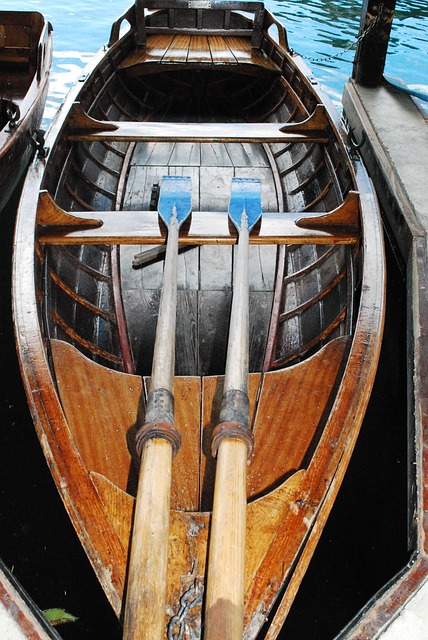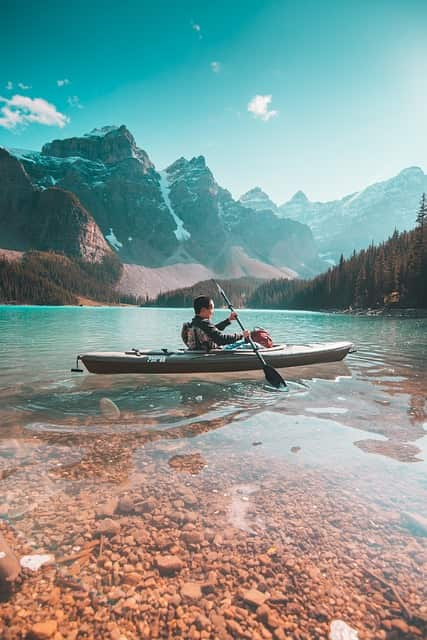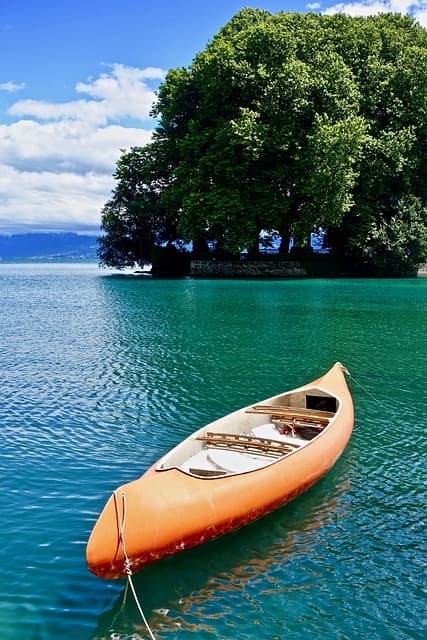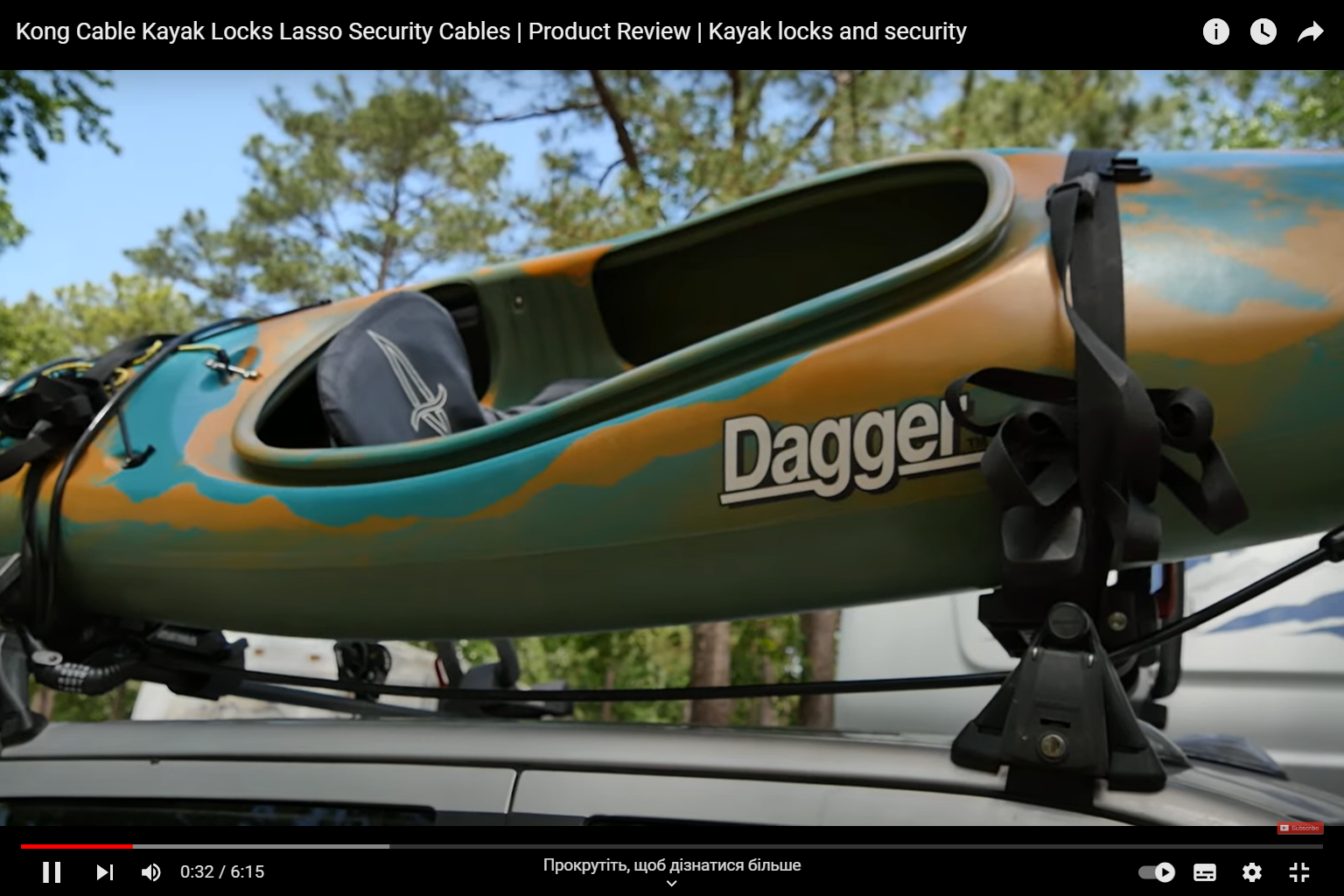Picture this: you’re all set for a thrilling kayaking adventure, but ensuring your kayak’s security during transport is paramount. Fear not, for in this comprehensive guide, we’ll unveil the secrets to locking a kayak to your roof rack. Whether you’re a seasoned kayaker or a newbie, these expert tips will make sure your watersport gear stays safe and secure on the road.
Understanding the Importance of Proper Locking
Before delving into the how-to, let’s underscore why proper locking matters. Imagine driving down a bumpy road only to discover your kayak loosened and dangling precariously. Besides risking damage to your kayak, an unsecured load poses a danger to you and fellow drivers. Now, let’s navigate through the intricacies of locking a kayak effectively.
Essential Equipment for Locking
To get started, gather the necessary equipment for securing your kayak. Here’s what you’ll need:
- Locking Cable or Straps: Choose a high-quality locking cable or heavy-duty straps designed for outdoor use. These will be the backbone of your kayak’s security;
- Locks: Invest in sturdy locks that are rust-resistant and tamper-proof;
- Roof Rack System: Ensure your roof rack is reliable, with kayak-specific attachments for optimal stability;
- Padding: Use foam padding or kayak cradles to prevent scratches and abrasions on your kayak’s hull.
Step-by-Step Guide to Locking Your Kayak
Positioning and Padding
Start by positioning your kayak on the roof rack. Place foam padding or kayak cradles on the rack’s crossbars to protect the kayak’s hull. This minimizes the risk of damage during transport.
Securing the Bow and Stern
Fasten the bow and stern of the kayak to your vehicle. Use straps or ropes to secure these points to the designated anchor points on your car’s front and rear bumpers.
Wrapping the Locking Cable
Now, drape the locking cable over the kayak and thread it through the kayak’s carry handles. Wrap the cable around the roof rack’s crossbars and secure it using the lock. This adds an extra layer of security to prevent theft.
Locking the Hatch
If your kayak has a storage hatch, lock it securely. This prevents unauthorized access to your belongings during stops.
The Comparison: Locking Cable vs. Straps
Let’s simplify your decision-making process by comparing locking cables and straps.
| Aspect | Locking Cable | Straps |
|---|---|---|
| Security | Offers higher security due to steel construction | Secure but may be cut with tools |
| Installation | Requires threading and locking | Quick and easy to fasten |
| Flexibility | Limited flexibility due to cable structure | Offers adjustability for various kayak sizes |
| Anti-Theft | Effective deterrent against theft | Not as strong a deterrent as locking cables |
Additional Tips for Secure Transport
- Double-check before departing: Before hitting the road, ensure all straps, cables, and locks are properly secured;
- Regular inspections: During long trips, make periodic stops to check your kayak’s security and re-tighten if needed;
- Weather considerations: If rain or strong winds are anticipated, use additional fastening to prevent movement.
Choosing the Right Locking System
Selecting the appropriate locking system for your kayak is crucial. You have a few options to consider:
Cable Locks
Cable locks are versatile and offer excellent security. They’re often coated to prevent scratching your kayak’s surface. Choose a length that allows you to secure your kayak while also looping around the roof rack.
Combination Locks
Combination locks eliminate the need for keys, making them convenient for quick stops. However, ensure the lock is made of durable materials to withstand outdoor conditions.
Keyed Locks
Keyed locks provide reliable security and are available in various sizes. Opt for locks with weather-resistant mechanisms to prevent rusting.
DIY Anti-Theft Measures
Enhance your kayak’s security with these DIY measures:
Remove Detachable Parts
Take off removable parts like seats, paddles, and accessories. This reduces the appeal of stealing your kayak and makes it less convenient for thieves.
Hide Locks
Don’t make your locks easy to spot. Concealing them with a towel or blanket adds an extra layer of security.
Creative Disguises
Consider using camouflage or paint to blend your kayak with your vehicle. This makes it less conspicuous and harder to target.
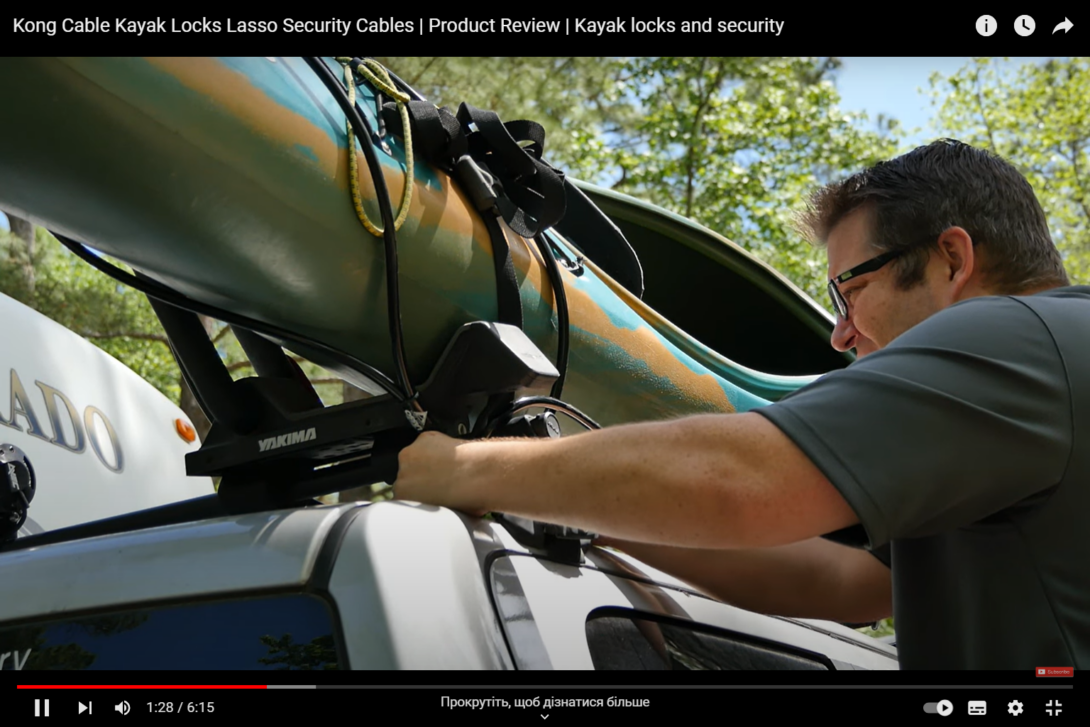
Comparing Locking Locations
When locking your kayak, you have a choice between two primary locations: roof-mounted and bed-mounted. Let’s compare their advantages and disadvantages:
Roof-Mounted Locking
- Advantages: Offers better aerodynamics and fuel efficiency, keeps the truck bed free for other cargo, minimizes the risk of damage from debris on the road;
- Disadvantages: Requires lifting the kayak overhead, may be challenging for shorter individuals.
Bed-Mounted Locking
- Advantages: Easier loading and unloading, suitable for taller vehicles, offers protection from weather conditions;
- Disadvantages: Affects the truck’s aerodynamics, may limit the use of the truck bed for other items.
Expert Tips for Long-Distance Transport
Long-distance travel demands extra care for your kayak’s security:
Weather Protection
If rain or sun exposure is expected, use a waterproof cover or UV-resistant tarp to shield your kayak from the elements.
Consider Wind Resistance
Strong winds can affect your kayak’s stability. Position it in a way that minimizes wind resistance and reduces the risk of wobbling.
Check Local Regulations
Different regions may have regulations for transporting large items like kayaks. Familiarize yourself with any local laws before hitting the road.
Ensuring Roof Rack Stability
Your roof rack’s stability is vital for safe kayak transport. Follow these steps:
Even Weight Distribution
Distribute the kayak’s weight evenly across the roof rack to prevent tilting or swaying during transit.
Tighten Bolts and Straps
Before each trip, inspect the roof rack’s bolts and straps. Tighten them if necessary to maintain a secure connection to your vehicle.
Avoid Excessive Speeds
High speeds can generate strong winds that affect your kayak’s stability. Drive at moderate speeds to reduce the risk of swaying.
Guidelines for Solo Loading and Locking
Solo kayakers need a methodical approach to ensure a safe loading and locking process:
Prepare Your Gear
Gather all necessary gear near your vehicle before loading the kayak. This minimizes trips back and forth.
Use Assistive Tools
A kayak loading assistant can simplify the process. Consider using a kayak loader or roller to make lifting easier.
Lock Gradually
Locking your kayak while it’s partially on the rack can provide extra support and prevent slipping.
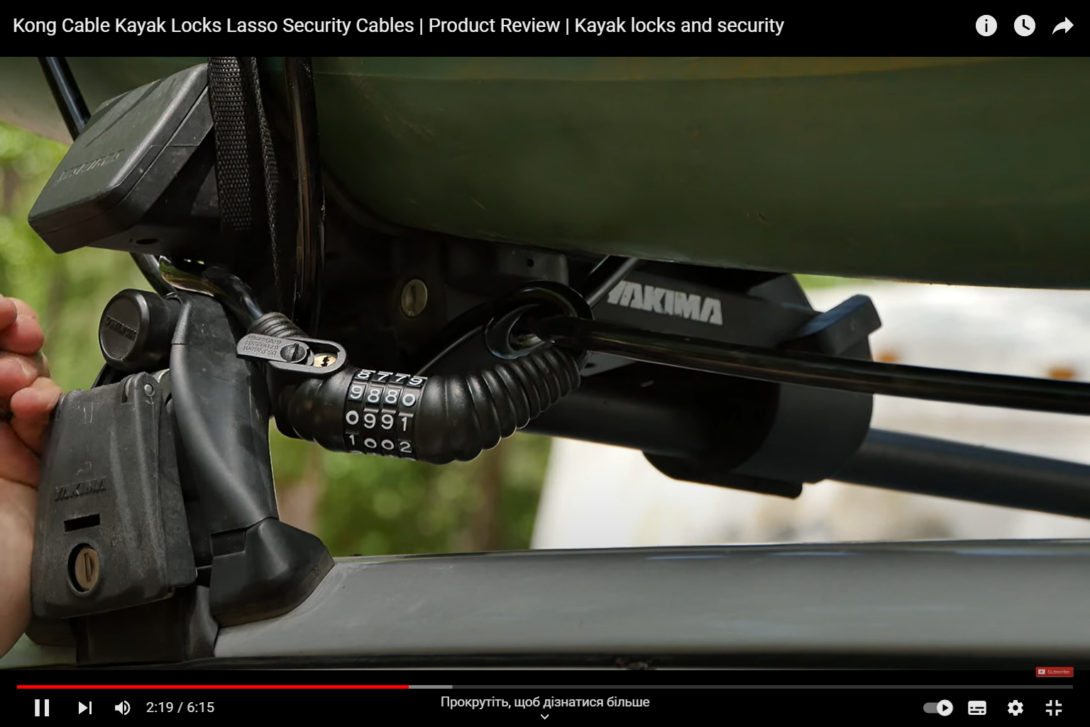
Checking for Proper Alignment
Proper alignment is crucial for both security and vehicle safety:
Parallel Alignment
Ensure your kayak is parallel to your vehicle. This reduces drag and minimizes the risk of damage during transit.
Equal Overhang
Maintain an equal overhang on both sides of the vehicle to ensure a balanced load distribution.
Avoid Obstructions
Check that the kayak doesn’t obstruct your view through the rearview mirror or block your vehicle’s lights.
Safety Precautions During Locking
Follow these safety precautions to prevent accidents during the locking process:
Use a Step Stool
A step stool or platform can provide a stable base for reaching your kayak and roof rack, reducing the risk of falls.
Watch Your Surroundings
Choose a well-lit area for locking your kayak and be mindful of your surroundings to prevent tripping or collisions.
Ask for Assistance
If you’re unsure about safely securing your kayak, don’t hesitate to ask for help from a friend or fellow kayaker.
Maintaining Kayak Security During Stops
Even during brief stops, ensuring your kayak remains secure is essential:
Frequent Visual Checks
Whenever you stop, glance at your kayak to confirm that it’s still securely fastened. This takes only a few seconds and offers peace of mind.
Avoid Unattended Stops
If possible, avoid leaving your vehicle unattended, especially in unfamiliar areas. Thieves are less likely to target a kayak if they know someone is watching.
Use Rest Areas and Gas Stations
When stopping for a meal or restroom break, choose well-lit and populated rest areas or gas stations where your kayak is less likely to be tampered with.
Emergency Preparedness
Be prepared for unforeseen situations on the road:
Tools and Spare Parts
Carry essential tools like wrenches and extra straps. In case a strap breaks or loosens, you can quickly address the issue.
Emergency Contact
Store a list of emergency contacts in your vehicle, including friends, family, and roadside assistance. This can prove invaluable in case of unexpected problems.
Kayak Repair Kit
Keep a basic kayak repair kit with items like duct tape and patching material. This helps in quickly addressing minor damages on the go.
Ensuring Vehicle Compatibility
Different vehicles require varying approaches to kayak locking:
Sedans and Hatchbacks
For smaller vehicles, consider using a lightweight kayak to reduce the load on the roof. Utilize roof racks designed for your vehicle’s roof type.
SUVs and Trucks
Larger vehicles can accommodate larger kayaks, but ensure that your roof rack system is designed for heavy loads and provides adequate support.
Compatibility Checks
Before purchasing a roof rack or kayak carrier, verify that it’s compatible with your vehicle’s make and model.
Nighttime Security Measures
Securing your kayak overnight requires extra precautions:
Garage Storage
Whenever possible, store your kayak in a garage or enclosed space overnight to protect it from weather and potential theft.
Well-Lit Areas
If outdoor storage is your only option, choose a well-lit area with security cameras or motion-sensor lights to deter thieves.
Secondary Locking
Consider using an additional lock, like a bike lock, to anchor your kayak to a stationary object, further reducing the risk of theft.
Regular Maintenance for Locking Equipment
To ensure your locking equipment remains effective, follow these maintenance tips:
Lubricate Locks
Regularly apply a lubricant to your locks to prevent rust and ensure they function smoothly.
Inspect Cables and Straps
Check your locking cables and straps for signs of wear, fraying, or damage. Replace them immediately if they show signs of deterioration.
Store Properly
When not in use, store your locking equipment in a dry and clean place to prevent rust and extend their lifespan.
Preparing for Weather Variations
Different weather conditions can impact your locking process:
Rainy Conditions
Use waterproof covers to shield your kayak from rainwater, preventing water from accumulating and adding unnecessary weight.
Hot and Sunny Weather
Prolonged sun exposure can cause materials to deteriorate. Whenever possible, park your vehicle in the shade or use a reflective windshield shade.
Snow and Ice
In snowy conditions, make sure your kayak isn’t exposed to accumulating snow. Clear it off before hitting the road.
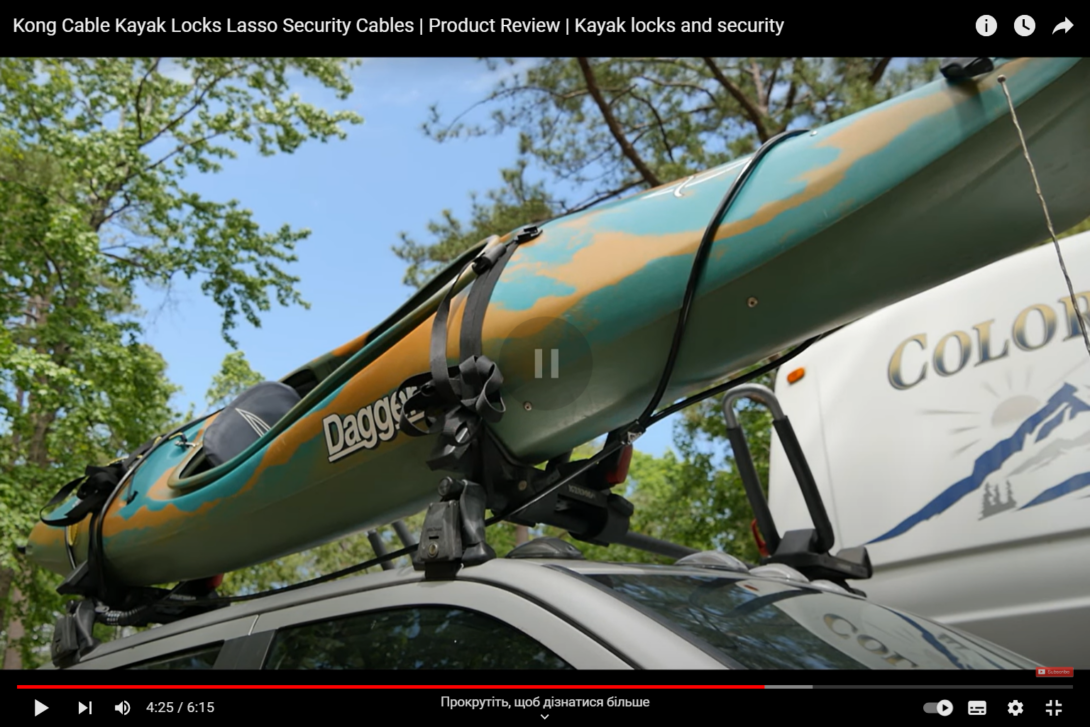
Eco-Friendly Locking Practices
Promote sustainability while locking your kayak:
Avoid Single-Use Plastics
Opt for reusable straps or cables instead of disposable plastic options, reducing waste.
Carpooling and Group Trips
Share rides and travel with fellow kayakers to reduce carbon emissions and promote eco-conscious transportation.
Leave No Trace
When securing your kayak, be mindful of the environment. Avoid damaging trees or other natural elements during the locking process.
Kayak Transportation Accessories
Enhance your kayak’s security with specialized accessories:
Bow and Stern Lines
These lines provide extra stability by securing your kayak’s bow and stern to the vehicle’s front and rear. They reduce the risk of swaying.
Locking Tie-Down Straps
Consider investing in locking tie-down straps, which have integrated locks for added security and convenience.
Kayak Saddles and Rollers
These accessories assist in loading and unloading your kayak while minimizing the risk of scratches.
Personalized Security Tips
Customize your locking approach based on your circumstances:
Urban vs. Rural Areas
In urban settings, consider using more visible locks as a deterrent. In rural areas, focus on protecting against weather conditions and wildlife.
Kayak Value
The value of your kayak can influence your locking decisions. More expensive kayaks might require higher security measures.
Local Recommendations
Consult fellow kayakers or local watersport shops for tips specific to your region. They may be familiar with local security challenges and solutions.
Incorporating Locking into Your Pre-Trip Routine
Make kayak locking an integral part of your pre-trip routine:
Pre-Trip Checklist
Create a checklist that includes locking procedures. This ensures you never overlook essential steps.
Practice Makes Perfect
Before embarking on a long journey, practice the locking process a few times to streamline your technique.
Familiarize Yourself
If you’re new to kayak locking, spend time familiarizing yourself with the process. Seek advice from experienced kayakers if needed.
Navigating Strong Crosswinds
Crosswinds can impact your kayak’s stability during transport:
Adjust Driving Speed
Reduce your speed when driving in windy conditions to minimize the effect of crosswinds on your kayak.
Correct Loading Position
Position your kayak on the roof rack so that it’s parallel to the wind direction, reducing resistance and sway.
Use Bow and Stern Lines
Bow and stern lines can further stabilize your kayak and prevent it from tilting due to strong crosswinds.
Understanding Weight Distribution
Proper weight distribution is crucial for safe and secure transport:
Balance Front and Back
Ensure that your kayak is centered on the roof rack, maintaining an even distribution of weight between the front and back.
Side-to-Side Balance
Position your kayak so that it’s equally balanced on both sides of the vehicle, preventing uneven weight distribution.
Rack Weight Limit
Always adhere to your roof rack’s weight limit to avoid straining the rack and compromising security.
Custom Locking Solutions for Unique Vehicles
Some vehicles require specialized locking approaches:
Convertibles and Soft Tops
For vehicles with soft tops or convertible roofs, consider using locking straps that can be secured to the car’s frame.
Vans and Minivans
Vans may have alternative locking points like roof rails. Utilize kayak-specific attachments compatible with your vehicle.
RVs and Trailers
When towing a trailer or driving an RV, secure your kayak with locking straps designed for larger vehicles.
Addressing Wind Noise and Drag
Reducing wind noise and drag enhances your driving experience:
Wind Fairing
Consider installing a wind fairing on your roof rack to minimize wind noise and enhance aerodynamics.
Secure Loose Straps
Loose straps can create a whistling sound at high speeds. Ensure all straps are tightly secured to prevent noise.
Storing Accessories
If possible, store kayak accessories inside the vehicle to reduce wind resistance and drag.
Preparing for Kayak Storage
When you’re not on the water, proper storage is key:
Indoor Storage
Whenever feasible, store your kayak indoors to protect it from the elements and potential theft.
Vertical Storage Racks
Vertical storage racks are a space-efficient option for garage storage. They keep your kayak safely off the ground.
Outdoor Covers
If outdoor storage is the only option, use UV-resistant covers to shield your kayak from sunlight and rain.
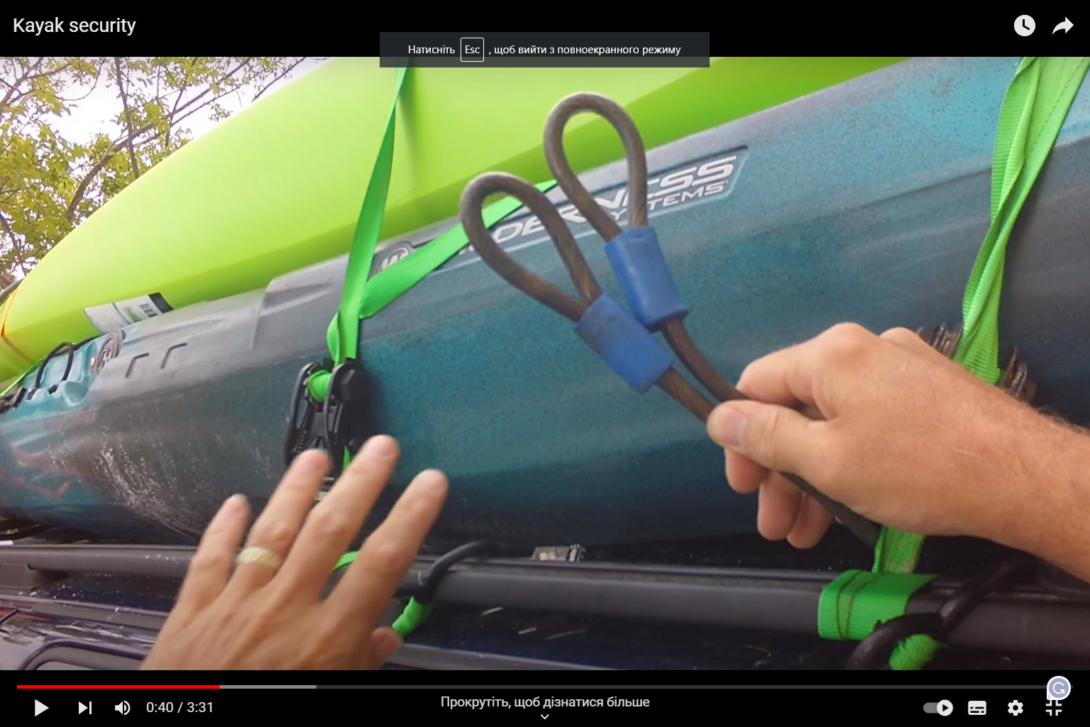
Caring for Locking Equipment
Maintaining your locking equipment extends its lifespan:
Regular Cleaning
Clean your locking cables, straps, and locks regularly to prevent dirt and grime buildup.
Rust Prevention
Use a rust-inhibiting spray on locks and metal components to prevent corrosion, especially if you frequently kayak near saltwater.
Lubrication
Apply lubricant to moving parts of locks and mechanisms to ensure smooth operation.
Combining Locking Methods for Security
Using multiple locking methods can enhance security:
Cable and Strap Combination
Combine a locking cable with straps for a double-layered security approach.
Backup Locks
Use a secondary lock, such as a padlock or bike lock, as an extra deterrent.
Comprehensive Protection
Utilize both locking methods and secure your kayak from multiple angles to deter thieves.
Safe Removal After Travel
Unloading your kayak safely is just as important as locking it:
Take Your Time
Avoid rushing while unloading. Carefully follow the reverse process of loading to prevent damage.
Check for Straps
Before driving away, ensure that all straps and cables have been removed from the kayak.
Visual Inspection
Examine your kayak for any signs of damage that may have occurred during transport.
Upgrading Your Locking System
As technology advances, consider these modern locking options:
GPS Tracking Devices
Some locking systems come with GPS trackers that allow you to monitor your kayak’s location remotely.
Smart Locks
Smart locks offer remote locking and unlocking capabilities via smartphone apps, providing added convenience and security.
Integrated Systems
Look into roof rack systems with integrated locking mechanisms for a seamless and secure solution.
Continual Learning and Improvement
Stay updated with the latest locking techniques and technologies:
Online Communities
Join kayaking forums and communities to learn from experienced kayakers and share your own insights.
Industry Trends
Keep an eye on industry developments and advancements in kayak locking technology.
Practice and Adaptation
Regularly practice your locking techniques to improve efficiency and adapt to new equipment or vehicles.
Conclusion
By now, you’re well-equipped with the knowledge to expertly lock your kayak to your roof rack. This vital skill ensures your kayaking adventures are smooth and worry-free, allowing you to focus on the thrill of the water. Remember, a securely locked kayak is an investment in both your equipment’s safety and your peace of mind.
FAQs
Locking cables provide an added layer of security against theft, making them a recommended choice for valuable kayaks.
While bike locks may work in a pinch, it’s better to invest in locks specifically designed for kayak transport due to their durability and weather resistance.
It’s a good idea to remove detachable accessories like paddles and fishing gear and lock them separately to prevent loss.
Absolutely. Even during short stops, keeping your kayak locked ensures its safety and deters potential thieves.
Straps or cables should be tight enough to prevent movement but not so tight that they damage the kayak’s hull or roof rack.
